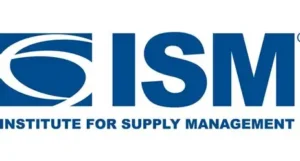📊 What ISM PMI Is & June’s Preview
- Definition: The ISM Manufacturing Purchasing Managers’ Index (PMI) is a key monthly survey that gauges new orders, production, employment, supplier deliveries, and inventories. A reading above 50 signals expansion, while below 50 signals contraction reuters.com
-
May’s Data: The May PMI stood at 48.5, marking the third consecutive month below 50, indicating continued contraction in U.S. manufacturing.
-
Forecast for June: Markets expect a slight uptick. Investing.com notes June’s PMI likely rose to 48.8 from a consensus of 48.5. Still below 50, but a move closer to neutral.
Market Implications of a Weak PMI
1. Equities
-
A weaker-than-expected PMI (~48.5) can dent industrial-heavy stocks (e.g., materials, energy) as it signals weaker corporate profits.
-
Conversely, signs of stabilization or a rebound toward 50 may support small-cap stocks, which historically benefit from early manufacturing improvements cambiar.com.
2. Fixed Income
-
A prolonged PMI below 50 fuels expectations of an easing Federal Reserve, which in turn cools the appetite for bonds.
-
Conversely, a surprisingly strong PMI (>50) might spark concerns about inflation, causing bond yields to rise and prices to fall.
3. Currency Markets
-
A weak PMI tends to weaken the U.S. dollar, lowering demand for U.S. debt and increasing dollar-denominated supply.
-
A stronger print can boost the dollar, especially if it reinforces a stronger-than-expected U.S. growth narrative.
4. Fed Policy
-
The Federal Reserve closely monitors the ISM PMI as a leading indicator of inflationary pressures and economic momentum.
-
Continued contraction would tilt the Fed more toward a hold or cut stance, while signs of strength might delay rate cuts or even prompt hawkish signals.
What to Watch in the June PMI Release (July 1 @ 10 a.m. ET)
| Scenario | Likely Market Reaction |
|---|---|
| Lower than forecast (~48) | Bonds rally, yields drop, dollar retreats, equities (esp. cyclicals) under pressure |
| As expected (~48.8) | Sideways in bonds and stocks; traders wait for the following data points or Fed minutes. |
| Above 50 (surprise) | Market trends could reverse—bonds sell off, dollar strengthens, cyclical stocks rally. |
Strategy Takeaways
-
Equity Allocation: Watch industrials and small-caps—early PMI strength tends to benefit these groups.
-
Bond Positioning: Bond investors should monitor the PMI for signs of a Fed pivot; a weak print is supportive of bonds.
-
Forex and Macro Plays: Traders in USD pairs or commodities, such as oil and metals, can use PMI-driven USD moves as a directional signal.
-
Fed Outlook: A soft PMI eases inflation pressure, supporting a dovish Fed bias—strong umpree might delay that.
Summary
The June ISM Manufacturing PMI, to be released July 1, holds significant sway over short-term market moves:
-
Equities: Especially cyclical sectors and small caps.
-
Bonds: Yield expectations hinge on PMI direction.
-
Currency: Dollar strength tied to economic surprise.
-
Fed policy: PMI remains a key Fed-watch input.
Whether the index remains in contraction territory, inches toward 50, or jumps into expansion, traders will interpret it through the lens of growth, inflation, and rate policy. A surprise beat could shift sentiment quickly, while a dovish miss could further affirm easing expectations.

